

Notes from the EditorsIn-chief:





Hello and welcome to the Summer 2025 issue of the GAIA magazine!
As the year is coming to a close, we have prepared a final issue of the magazine before we pass the torch onto next years new lower sixths; we hope that they can have as much fun as we have had creating these amazing publications. Producing this final issue has been bittersweet, we’ve all enjoyed creating the magazine so much, but we know GAIA will be in capable hands next year with Silvia rallying the troops. Over the year we have coordinated numerous events like bake sales, rock painting, trips and more, even offering a new opportunity to learn Latin! It truly has been a fulfilling year.
3 Terms and 3 exceptional Issues that we, as a team, are immensely proud of. This has been an incredible opportunity and thank you to everyone who has supported GAIA at events (Winter Wonderland and Model UN etc.) it has been so encouraging so please sit down and prepare yourself for our final issue of the year!
Luisa Hughes and Callum Smith
Pg. 2 Note from the Editors-in-Chief
Pg. 3 Contents Page
Pg. 4-6 ……………………………………………… Antarctica or the Amazon. Olivia Beaumont-Hardman
Pg. 7-8 ………………...………. WW1 and the assassination that started it all. Remy Gerard Naylor
Pg. 9-12 The Etruscans. Italy before Empire. Archie Mccabe Brown
Pg. 13 History Quiz
Pg. 14 …………………………………………………………………………………..…..……….……… Geography Quiz
Pg.15-16 ………………………………………………………………………………... Jet Zero Strategy. Callum Smith
Pg. 17 The cost of being trendy. Rebecca Gallagher
Pg. 18-19 Accuracy of the Titanic. Luisa Hughes
Pg. 20 History Quiz Answers
Pg. 21 …………………………………………………………………………………...………….Geography Quiz Answers
Pg. 22 ……………………………………………………………………….…………The Platybelodon. Emma Winnard
Pg. 23 The Divine Influence in Rome. Emma Winnard
Pg. 24-25 GAIA in a year
Pg. 26 Meet GAIA
Pg. 27 …………………………….……………………………………………………………………………… A big Thankyou
Would you rather conserve Antarctica or the Amazon?
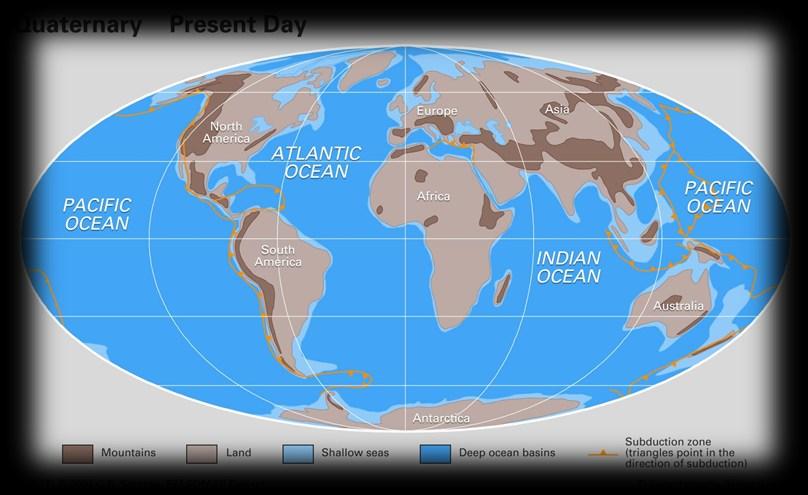
Each of these places hold a significant role in the Earth’s closed system as they help to combat the effects of climate change. While there is no denying that our globe naturally experiences periods of warming and cooling – after all, we are currently living in an interglacial period known as the ‘Quaternary Ice Age’ and are on track to experience the naturally occurring warming of the earth – over the last 150 years, the rate of which the heating of our home has taken place has experienced an extreme augmentation due to the harmful practices we have adopted, from our consumption of hamburger meat at McDonalds, to our mass consumerism in the fast fashion industry. Overall, the ten most recent years have been the warmest as the Earth was about 1.4 degrees Celsius warmer in 2023 than in the late 19th-century pre-industrial average. This has had catastrophic effects regarding our uniquely valuable ecosystems, that we rely on the exploitation of daily; for example, the number of reported natural hazards (including flooding and wildfires) has increased by around 92% from 1990 till 2023. In recent years, Timothy Lenton (director of the Global Systems Institute at the University of Exeter) identified what he believes to be a spectrum of tipping points, where major earth systems could change the ways in which they operate, including the melting of polar ice caps and significant biodiversity loss in forests. In this essay, I intend to consider possible effects and outcomes of choosing to or not to conserve (protect/maintain) these areas of renowned natural beauty, and to weigh up which option would be more beneficial for us as the human race and the planet, which we all share, as a whole.
Spreading over eight rapidly developing countries, the Amazon rainforest is home to one of the richest hotspots for biodiversity in the world (as it houses around 10% of all known biodiversity). It also has an immense importance in the role to play of keeping a suitable geographical balance. It could be said that the Amazon is abundant in value including around 70% of cancer curing products and even a cure for malaria called ‘quinine’ which comes from Cinchona officinalis. It is also extensively used for supplying the textile industry, specifically fast fashion- seeing as each year, over 200 million trees are cut down for the use of fibre manufacturing and to create space for pasture to aid the creation of leather products and meat consumption. Not only do these resources prove valuable in our medical and fashion industries as we know them today, it also benefits the local economy by providing people with a chance for income. For example, the average forest worker logging gross salary in Brazil is R$50.631 according to Salaryexpert.com; this benefits the regional communities relative to the Amazon as it offers them a stable income and the ability to afford necessities, including education and healthy meals. However, the extent of threats to the forest is growing exponentially and has resulted in its own chapter in a 3,675page UN climate science report. For instance, around 35% of logging occurs in the informal industry and it has a colossal impact on the wildlife living within the destroyed trees, after all 70% of our animals are dependent on trees for shelter, food and nutrients, this significant loss of habitats may lead to disruptions in the entire food chain within the Amazon ecosystem. According to Panda.org, deforestation is the leading cause of biodiversity loss across the world and as a globe we have experienced a loss of wildlife of almost 70% over the last 48 years. This could propel the rate at which we are experiencing global warming. Research carried out under the INPE shows that around 30% to 60% of the Amazon could be converted to a type of dry savanna due to the loss of trees in the region. This is
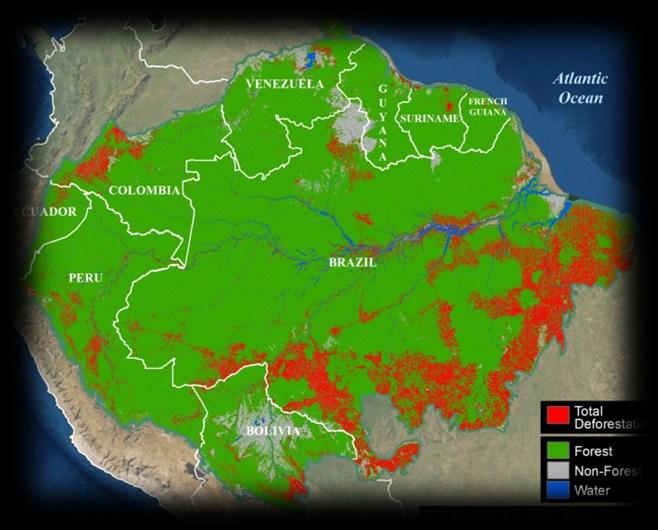
alarming geographers globally as it could massively increase the globes temperatures through the albedo effect as dark soil becomes exposed. It could also massively reduce the crucial carbon sink of the rainforest, further accelerating the rate of climate chance through a major lack of greenhouse gas absorption, in particular carbon, of which the amazon absorbs ¼ of, as there will be a lower amount of photosynthesis occurring in South America. Aside from the alarming threat to the environment possible through neglecting to conserve the amazon, it could also have a substantial impact on humanity. Globe-Net states that “33 million call the amazon rainforest home” and many rely on it for their livelihood we must consider where these people would migrate to if they lost their home along with the extreme impacts of loss of culture and the wasteful nature of the potential sheer number of undiscovered cures.
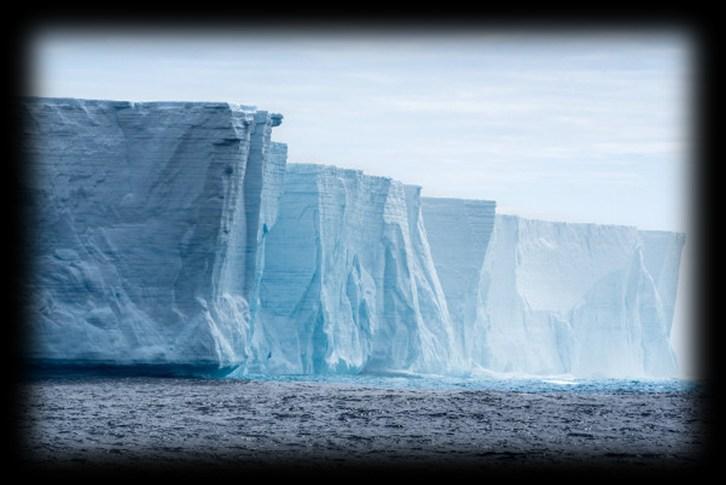
The 4km thick ice sheet known as Antarctica is operated on by 18 countries year-round. The British Antarctic Survey states “As well as being the world’s most important natural laboratory, the Antarctic is a place of great beauty and wonder. Its frozen wastes have fired the public imagination for generations, and around 30,000 tourists now visit the Antarctic each year to experience what life is like in the Earth’s last great wilderness.” Arguably one of the biggest importances of the Antarctic is the impact it has on the wider world through preventing the albedo effect (as deforestation is occurring across the globe, the dark colour of the exposed soil allows for faster absorption of heat from the sun’s rays, which creates a faster warming effect, the white/bright colour of the ice reflects the rays and can combat the process). Without the Antarctic’s impact on reducing the effect, for example – if Antarctica melted, it could be said that climate change would be accelerated irreversibly. This could cause a chain reaction of events... a positive feedback loop; as the Antarctic environment warms, the frozen organic layer, “permafrost”, will begin to melt and decompose, which will emit greenhouse gasses such as carbon dioxide and methane, resulting in an adverse effect on the rate and speed that our world warms and it will also cause darker surfaces(due to the dark colour of the ocean water and the additional water added to our ocean) which absorb the warmth even more rather than emit them. Considering Antarctica contains approximately 90% of the world’s total surface fresh water (and 60% of the world’s total fresh water) this would negatively impact earth to a significant extent as increasing temperatures can leave the rest of our globe vulnerable to a higher frequency of extreme weather events, from floods in the UK (similar to the storm Desmond, which hit Cumbria in 2015 with 341mm of rainfall) to wildfires in LA, California (of which, in January 2025 displaced around 200,000 people and left at least 29 people dead, as a result of the 14 fires). Antarctica also provides us with a unique record of our globe over one million years; according to Laboratory for Climate and Environmental Sciences, an international consortium of scientists from twelve institutions has managed to reach ice dating back more than 1.2 million years by drilling a 2,800-meter-long ice core in the Antarctic ice sheet. The samples collected will make it possible, for the first time, to reconstruct key parameters of Earth’s climate and the composition of its atmosphere beyond 800,000 years into the past. We must also consider the inevitability of the Antarctic ice sheet melting- as we exit the quaternary ice age, global temperatures are set to naturally increase and the ice on our globe will subsequently melt. However, the concern is the rate at which we are experiencing this warming, rather than seeing the ice melt in thousands of years, it is likely to occur sooner than expected (possibly in some hundreds of years).
So, which place is more worthy of conservation? I believe it is evident that the Amazon is much more worthy of conservation, for example the Antarctic will inevitably melt, and it is much more worthwhile to protect the ecosystem which houses one of the greatest biodiverse abundances in the world. The conservation of the amazon will also mean that much less people are displaced and prevents the loss of access to 70% of cancer curing drugs. It could also be argued that The Amazon also has a much more significant role in combatting climate change caused
by carbon emissions due to its role as arguably the biggest carbon sink on earth (provided that it is well-conserved, and the mass deforestation is stopped). Overall, losing the Amazon will have a much greater impact on global warming in the long run rather than Antarctica.
REFERENCES:
-panda.org
-Wikipedia
-TIME Magazine
-climate.nasa.gov
-American Museum of Natural History
- Green Match
- Reuters
-National Institute of health
-Earth Day
-Salary Expert.com
-news.mongabay.com
-National Geographic
-Globe-Net
-British Antarctic Survey
WrittenbyOliviaBeaumont-Hardman
Edited
by
Philipa Horrobin.
“AnAlysing The CAuses Of WWi And The AssAssinATiOn AT sArAjevO”

The outbreak of World War I in 1914 was the repercussion of a network of long-term causes and a critical-short term prompt: the assassination of Archduke Franz Ferdinand in Sarajevo, BosniaHerzegovina. Many historians will often point to four main causes that set off the conflict:
Militarism, alliances, imperialism, and nationalism – often referred to by the acronym “MAIN”. These four forces had been building up for decades across Europe through international relations and thus tense, unstable environments gave rise to inevitable climates of war.
Militarism played a vital role in escalating tensions among the powers of Europe – particularly Germany and Britain. Within both of these nations, the late 19th and 20th centuries saw a soar in the buildup of military forces. Germany’s expeditiously expanding navy challenged the traditional British naval supremacy, leading to what was arguably the first arms race. Nations resulted to a fleeting response via glorifying their military strength. In this, a great atmosphere of paranoia and competition formulated.
Furthermore, alliances divided Europe into two major blocs: the Triple Entente, comprising France, Britain, and Russia; and the Triple Alliance, consisting of Germany, Austria-Hungary, and Italy. The alliances began as what was originally meant to deter aggression, but instead made war only more likely As these alliances relied on military intervention if one nation was attacked, it is now easy to identify how two countries dragged their allies into a broader war.
Imperialism enraged rivalries. As European nations engaged in the “Scramble for Africa” - a most horrible and inhumane border-drawing process - they competed for influence in both Africa and Asia. Their very own imperial ambitions led to recurring confrontations between former friends, intensifying dubiety over intention. The great struggle for global supremacy led to a surge in the constraint of international relations.
Moreover, nationalism could be argued to have grouped together all of the other factors and pushed them to a breaking point. Across Europe in the early 20th century, nationalism saw a great magnification. As empires were both still intact and expanding each day, many Serbs, Croats, and Bosnians desired independence from the grasp of the Austro-Hungarian Empire, declaring their want and will for unification with Serbia.
It is for these reasons that it is entirely clear and comprehensible to see how on June 28, 1914, when Archduke Franz Ferdinand, heir to the Austro-Hungarian throne, was assassinated by Gavrilo Princip, a Bosnian Serb and member of a nationalist group, within the centre of Sarajevo, a local conflict transformed into a worldwide war.
World War I was not a direct consequences of the assassination at Sarajevo, but the assassination was merely the spark that ignited an already volatile set of circumstances. This is a telling example of what we should avoid today.
WrittenbyRemyGerardNaylor
Edited by Faye Amelia Rose Glover-Smith
THE ETRUSCANS: ITALY BEFORE EMPIRE
Although they have no surviving literature, their legacy survives in our word ‘person’ . The Romans feared them for centuries, and the Greeks abhorred them for their indulgence in luxury and their shockingly progressive treatment of women. Yet the Etruscans often evade the popularly accepted pantheon of great ancient civilizations, overshadowed by their Italian neighbors, the Romans, who ironically they had subjugated in the days before the Republic.

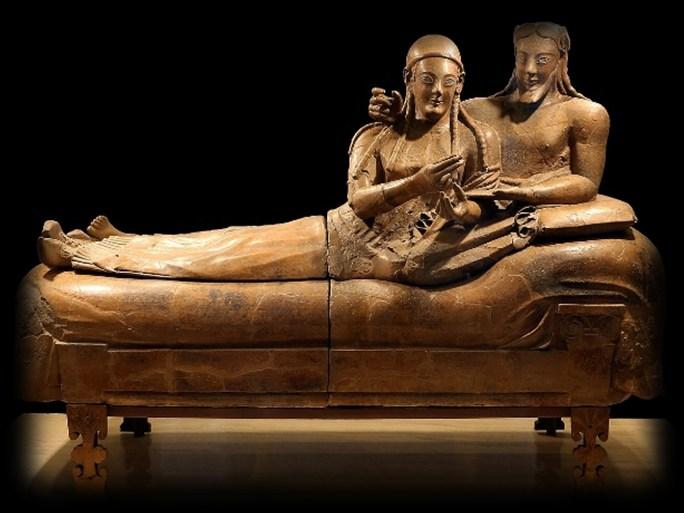
So who were the Etruscans? In simple terms, they were the civilization who existed in what is now Tuscany, north-western Lazio and Umbria in modernday Italy in the days before Roman dominance. Much of our knowledge of the Etruscans comes not from primary literature, but from the vast array of archaeological evidence that they left behind. Etruscan art is renowned for its exuberance and use of vibrant colours, especially in wall paintings.
Perhaps the best example of Etruscan wall art is the frescoes in the Tomb of the Triclinium in Tarquinia. Tombs like this often depict vibrant scenes from Etruscan mythology, banquets, hunting and sport.
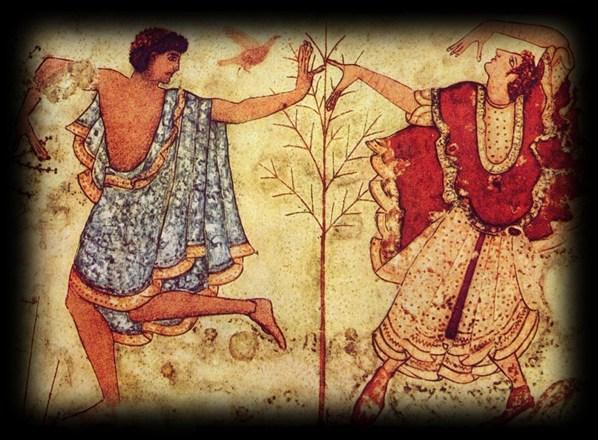
A scene from the Tomb of the Triclinium, depicting two dancers
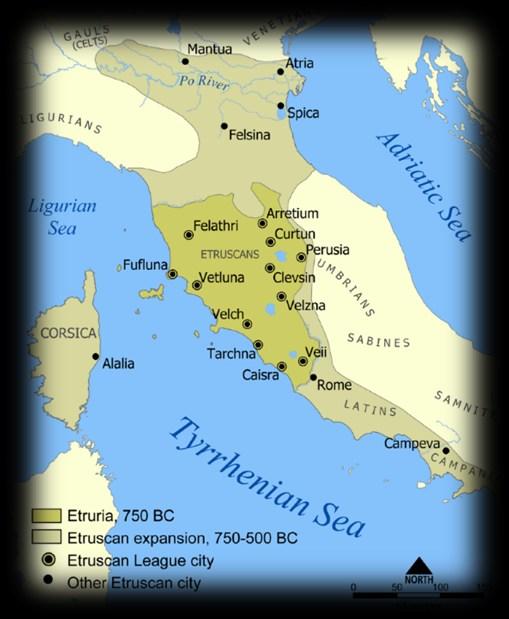
From these tomb paintings we can infer a great deal of the Etruscan lifestyle. Firstly, only 2% of Etruscan tombs are painted lavishly like the Triclinium above suggesting the presence of a small and incredibly wealthy upper class that likely held the power in Etruscan society. The structure of the tombs as homes, and the presence of entire cities of them, also suggests that the Etruscans’ relationship with death was one of a continuation of life in another plane of existence, much like the ideas of many contemporary religions and, indeed, the mythologies of antiquity.
Of course, a city of the dead requires a city of the living to fill it, and there is much evidence of the existence of Etruscan cities.
Map of Etruria, showing the Etruscan heartland as well as its territorial height. The cities of Tarquinia, Volterra and Cerveteri are displayed here in their Etruscan names: Tarchna, Felathri and Caisra respectively.
The most powerful and important cities of Etruria are often considered to be Tarquinia, Cerveteri and Volterra. These cities, along with the others of Etruria, acted as independent city-states, not unlike those of Ancient Greece, but were united somewhat by an Etruscan League. We know next to nothing about this federation other than the fact that the twelve or fifteen most important cities sent elders to meet, largely for religious purposes, at a sanctuary known as the Fanum Voltumnae (probably near present day Orvieto).
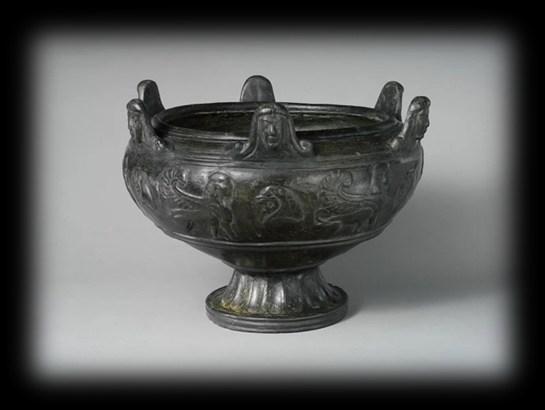
Whilst the city-states of Etruria did exist as independent polities, this is not to suggest that there wasn’t a shared cultural identity that existed amongst them. Pottery and sculpture from across ancient Etruria are generally consistent with the distinctive black bucchero pottery even influencing the artistic titans of Greece. The Etruscans were also experts in terracotta and bronze sculpture, ranging from tiny grave gift figurines to huge bronzes such as the famous Chimera of Arezzo, perhaps the best surviving example of Etruscan sculpture.
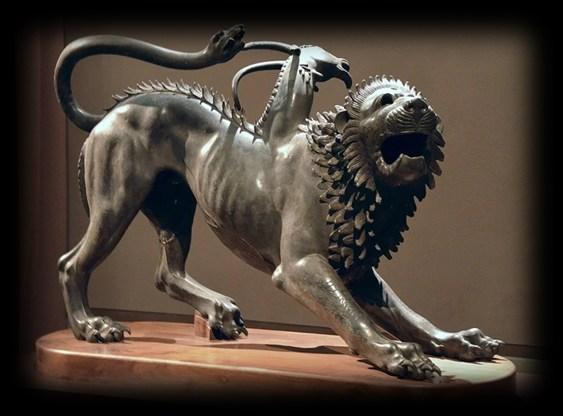
bacchero krater (left) and the famous Chimera of
The Etruscans were criticized by their eventual conquerors, the Romans, for being too effeminate and indulging in parties too often, and the Greeks criticized them for their opulent lifestyles. These claims are certainly not helped by the multitude of Etruscan bronze mirrors that survive. The most striking examples contain mythological scenes and characters, such as Hercules.
The discovery and study of Etruscan art is so important to understanding the society and culture of the civilisation because there is simply no Etruscan literature that survives. The scarce amount of Etruscan writing that does survive is limited to mundane but useful inscriptions such as border stones and engravings on artwork. From this, linguists have been able to infer that the Etruscan language can be categorised under the general Paleo-European branch of languages (only one of which, Basque, survives today), meaning it pre-dates the late Neolithic and Bronze Age migrations of the Indo-Europeans, who gave Europe a vast majority of its modern languages. This means the Etruscan language is incredibly ancient and completely different from any language that exists today, and even the European languages of antiquity, making it hard to decipher.
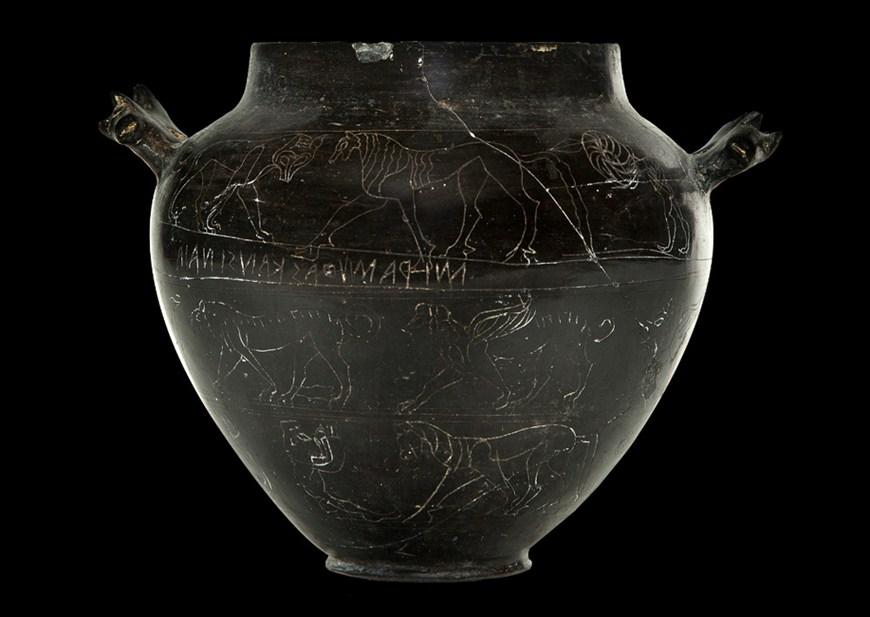
Some inscriptions have been deciphered, however, and they offer an even more interesting insight into the society of the Etruscans. Two particularly insightful examples are held in the Vatican Museum and Louvre Museum respectively. The first is inscribed on a bucchero olleta (a small vessel used to hold food) which reads “mi ramuthas kansinaia,” or “I am from Ramutha Kansinai.” Here, the owner of the olleta, a woman, is identified by her full name and is presumably the owner of this vessel. This may seem insignificant now, but compared to other societies of antiquity, such a thing is incredibly unusual. The second inscription, held in the Louvre, reads “Kusnailise,” which can be interpreted as “in the workshop of Kusnai.” Here, Kusnai, a woman, is the owner of a business.
Bucchero olleta with inscription (630-590 BC), Vatican Museum
Whilst the opulence and sophistication of Etruscan society is well understood by modern historians, their origins were the subject of debate until relatively recently. Even as far back as the Classical period (479-323 BC), scholars speculated about their origin. Herodotus, the man often considered to be the father of history, wrote that the Etruscans (or Tyrrehenians) originated from Lydia, a kingdom in modern day Turkey:
A
Arezzo (right)
This is their story: [...] their king divided the people into two groups, and made them draw lots, so that the one group should remain and the other leave the country; he himself was to be the head of those who drew the lot to remain there, and his son, whose name was Tyrrhenus, of those who departed. [...] they came to the Ombrici, where they founded cities and have lived ever since. They no longer called themselves Lydians, but Tyrrhenians, after the name of the king's son who had led them there.
This origin was widely accepted in antiquity, but modern historians have come to a different conclusion. Herodotus’ explanation has been disproven by the DNA testing of Etruscan remains, which have shown that the Etruscan people were indigenous to Italy. This is particularly interesting because the earliest precursor to the Etruscan civilization, the Bronze Age Proto-Villanovan Culture, was Indo-European meaning its people had migrated from Eastern Europe and Central Asia. Considering the Etruscans’ linguistic distinction from its Indo-European neighbors, and the genetic tests suggesting an indigenous origin, it is safe to assume that the ancestors of the Etruscans were assimilated into this Proto-Villanovan homogeny during the Bronze Age.
You may be surprised to know that, from here, Herodotus’ account is somewhat accurate. Whilst the Lydian origin of the Etruscans is wrong, and the existence of Tyrrhenus is unlikely, the time that Herodotus (and other writers of Ancient Greece) places his migration in is fairly accurate to when historians believe the Etruscan civilization emerged, that being the Early Iron Age (although Tyrrhenus is often associated with 1200–1000 BC, while the Etruscans emerged around a century later in 900 BC).
Trade with the Alpine Celtic tribes and the city states emerging from the long Greek Dark Age contributed to an explosion in wealth for the young Etruscan cities, and interactions with Greek colonists in Southern Italy and Sicily caused cultural exchange, greatly influencing the Etruscan arts and society, which can clearly be seen in Etruscan sculptures, with their almond shaped eyes, aquiline noses and the skin tones of men and women in their frescoes.
Etruscan religion was also significantly impacted by contact with the Greek world. The Etruscans did have their own polytheistic religion with similar gods to those found in cultures descended from the Indo-Europeans (again suggesting the earliest Etruscans adopted much of their culture from those groups). Gods in this pantheon included Tinia, the equivalent of the Roman god Jupiter, and Nethuns, which is quite obviously parallel to Neptune. Other deities, such as Menrva (who heavily influenced the Roman Minerva) even exhibit traits that are unique to the Etruscan pantheon. After contact and trade was established with the Greeks, however, the Etruscans began directly borrowing gods, religious ideas and mythological characters from the Hellenistic world, ranging from Hades to Odysseus.
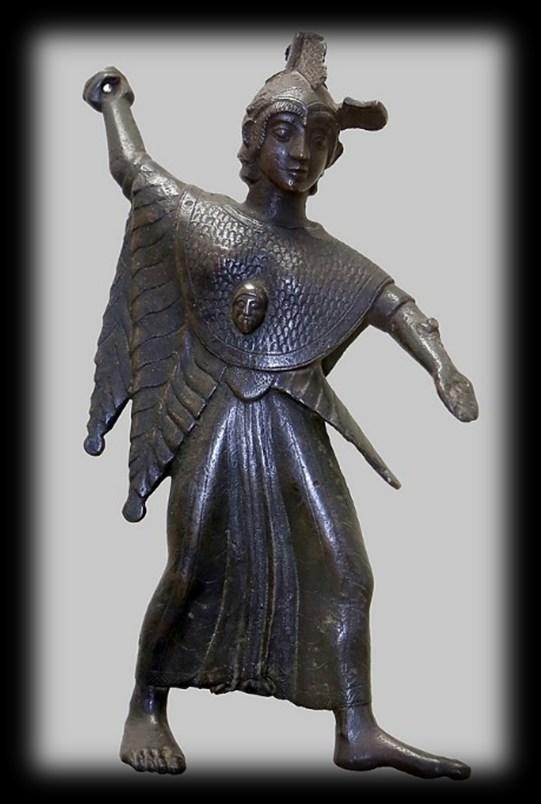
But these were not the most important concepts the Etruscans took from the Greeks. From about 700 BC, the Etruscans began using a system that would continue to be used and adapted for nearly 3,000 years: the alphabet. It wasn’t their invention, nor was it the Greek’s (they themselves had borrowed it from the Phoenicians of modernday Lebanon), but it was the Etruscan alphabet that was introduced to the Romans in the 7th century BC, and served as a direct ancestor to the Latin Alphabet that this article is written in.
Bronze Statuette of Menrva, 500-480 BC

The Etruscan Alphabet
The Romans adopted a lot more from the Etruscans than just the alphabet, however. Gladiatorial combat is recorded by Greek historian Nicolaus of Damascus as having originated in Etruria, and the Etruscan tebenna is believed to be the ancestor of the toga, which is seen as synonymous with Ancient Rome. Temples, with their marble columns and intricate stone impressions also owe their affiliation with the Romans to Etruscan influence. Although, like the alphabet, the style of architecture that would go on to be associated with Rome was an adaptation of Greek methods, it is thanks to Etruria that such styles were introduced to the Eternal City.
And, finally, one must not forget the Etruscan invention that is present in the daily lives of English speakers worldwide: the word person. It is believed that this word comes from the Etruscan word phersu, meaning mask, specifically a piece of costume used by a stage actor, which was borrowed into Latin as persona You can see where the word travels from there.
In the end, whilst the Etruscans and their language have since disappeared into the annals of history, absorbed almost entirely by Rome before the Empire was even declared, their influence remains. Cultural symbols synonymous with the Romans were adopted from the Etruscans, and the alphabet we use today descends from an Etruscan adaptation of that of the Greeks. So, when you now think of something Roman, ask yourself this: is it really Etruscan?
WrittenbyArchieMccabeBrown
Edited by Lucy Winkel
History Quiz


1. Who was the first emperor of Rome?
2. Who is known as the ‘Father of History’?
3. Which English king was known as ‘Lionheart’?
4. Who painted the ceiling of the Sistine Chapel?
5. Who was the first Tsar of Russia?
6. What year did the French Revolution begin?



7. Who led the charge for the Italian unification in the 19th century?
8. What movement sought to abolish slavery in the United States?
9. What year did the British Empire officially end the transatlantic slave trade?
10. What was the name of the first steam-powered locomotive?
11. Who was Henry VIII’s 4th wife?
12. Find the country that was home to the pharaohs?

Geography Quiz

1. In which country is Chernobyl?
2. In what country is the Seine River?
3. Where would you find the world’s largest Buddhist temple?
4. What is the smallest country in the world?
5. Which country is known as the ‘Land of the Rising Sun?
6. What is the deepest ocean in the world?
7. What is the capital city of Morocco?
8. Which U.S. state has the most volcanoes?
9. Which ocean is the warmest on Earth?
10. What is the currency of SouthAfrica?
11. What does NEE stand for ?
12. Where did the Titanic go down? Mark on the map provided.



Jet Zero strategy: What does it mean for passengers?
Jet Zero is a UK government framework and plan to achieve net zero aviation by 2050. According to energysavingtrust.org.uk, net zero means achieving a balance between the carbon emitted into the atmosphere and carbon removed from the atmosphere. The aviation industry is responsible for around 2.5% of the world’s carbon emissions and 7% of the country’s greenhouse gas emissions but it is still vital that these emissions are lowered in order to lower the industry’s contribution to climate change. Some experts believe that ‘Jet Zero’ is too large of a goal to meet by 2050 and Sir Dieter Helm even goes on to question whether the government really intend to achieve this target. Despite this, the ‘Jet Zero’ strategy is underway as in 2023, Virgin Atlantic had the world’s first net zero transatlantic flight using solely sustainable aviation fuel (SAF)- showing this could be a possible future for the aviation industry.

The Jet Zero framework could be a viable future for aviation but how does the government intend to achieve the targets they set out? To meet their targets, the government are focusing on 6 key measures:
Developing a sustainable aviation fuel industry
Launching zero-emission flights with new aircrafts
Improving the efficiency of aeroplanes, airports and airspace us
Encouraging people to make sustainable travel choices
Compensating with specialists to mitigate the non-CO2 environmental impacts of aviation
The use of SAFs such as biofuels (made from feedstock) reportedly produce 80% fewer carbon emissions over their life cycle than fossil fuels and they can be used to fuel current aircraft whereas the use of hydrogen would require new aircrafts to be designed. This is beneficial to passengers as it allows for them to be able to make sustainable choices and fly sustainably sooner. It also means that airlines won’t have the additional pressures of buying new aircraft to meet their passenger demands sustainably and can do their bit for the environment at a lower cost with their current aircraft. With the UK government allocating an additional £180 million towards funding production, testing and implementation of SAF, the targets for 10% of liquid aviation fuel in the UK to be SAF by 2030 and up to 75% by 2050 seem more achievable and realistic.
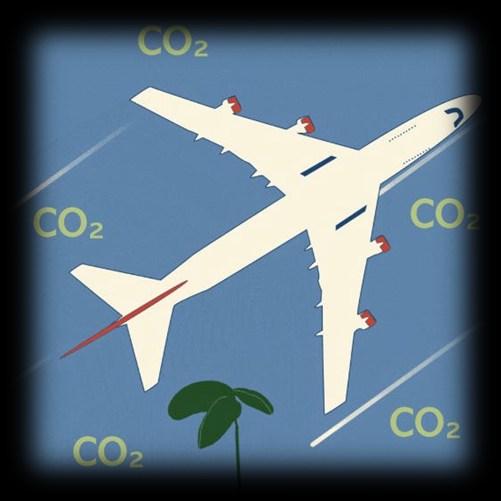
However, only green electricity and green hydrogen are able to power zero-emission flights and while small electric-battery aircraft exist, they can only be used for short distance flights of 200km-500km. Additionally, it is believed that for long-haul commercial flights, liquid hydrogen would be a better alternative for fuel and hydrogenpowered planes are still in the developmental stage. The government has allocated £685 million in funding to develop zero-emission hydrogen-powered aircrafts in the UK and is aiming to double UK hydrogen production and run zero-emission domestic flights by 2030 so the ‘Jet Zero’ strategy appears to be a goal that the UK government
are serious about achieving- this could open up a large amount of job vacancies and significantly boost the UK’s economy should it all be successful but what does this mean for passengers?
According to the Office for National Statistics, UK residents made 86.2 million visits abroad in 2023. So, how will the ‘Jet Zero’ strategy impact these residents and will there be a surge in ticket prices? Well, as with any new, sustainable technology, a raised price is to be expected and the proposed sustainable future for aviation is no difference. Currently, airlines pay a fee for each flight someone takes in the UK- a cost that is passed onto the passengers. In most of the UK (excluding Scotland), this adds £7 to each domestic flight, £14 to short-haul flights and £92 for longhaul. The additional cost of carbon offsetting will lead to airlines and passengers having to pay another fee. Additionally, Sir Dieter Helm (professor of economic policy at the University of Oxford) argues there ‘definitely would be higher cost’ while Duncan McCourt (chief executive of Sustainable Aviation) believes that removing carbon from flying won’t add more than a few pounds to the total cost of an airline ticket. However, the cost to passengers while inevitable seems largely dependent on the method employed by these companies to reduce or cut carbon emissions.
While the ‘Jet Zero’ strategy could be hugely successful with continual funding and research, some people have questioned both the possibility of meeting the target and the ethics behind other similar schemes. For example, Cait Hewitt highlighted that informal offsetting projects could have been counterproductive as she states ‘They could actually have made the problem a bit worse over time by giving consumers the false impression that the emissions from their flight [are] being cancelled out somehow by an offset.’ this raises questions around the possible support for the project and whether people will trust that the carbon emitted from their flight is truly being offset. Ultimately, this would rely on consumerproducer trust which could be increased by promotion of net zero and carrying out other sustainable practices in order to show their commitment to protecting the environment. Other schemes similar to this have been controversial due questions being posed regarding how to prove how many trees have been prevented from being cut down. While this is a legitimate concern, any reduction in deforestation while have positive effects for the environment as trees act as a carbon store.

Overall, the ‘Jet Zero’ plan could be the future for aviation but sustainable practices need to also occur in other aspects of the aviation industry such as within airports too to maximise potential carbon emission reduction. Despite the slight rise in ticket cost for passengers, the plan seems to have mostly positive impacts for the future of aviation and with implementation and funding already occurring, there is a strong hope for the future of the UK government’s ‘Jet Zero’ strategy. Additionally, while passengers may have an initial aggrievance to the raised cost of an airline ticket, over time a sense of stewardship may be fostered and a willingness to help protect the environment may occur.
WrittenbyCallumSmith
Edited by Philippa Horrobin
The real cost of being trendy and fast fashion
What is fast fashion?
Fast fashion is described as “inexpensive clothing produced rapidly by mass-market retailers in response to the latest trends.” In the rise of fast fashion clothing production has doubled as well as purchases. Global apparel consumption is projected to rise 63% in the coming years. The problem is many people treat low priced clothing as disposable and only wear it a few times before discarding it completely. Did you know 3 out of 5 clothing items from fast fashion retailers either end up in landfill or incinerated? A main factor which keeps fast fashion growing is the growing consumer base. Partnerships with influencers, marketing, discounts, and sales all keep customers coming back for more. Is it worth it?
How it impacts our environment:
The Aral Sea, located between Kazakhstan and Uzbekistan, has been completely dried up due to unsustainable cotton cultivation. It takes 10,000 litres of water to produce one pair of jeans and 2,700 litres for a top. This disaster has not only impacted the environment but the health and jobs of surrounding residents. The fashion industry has been labelled as “one of the most polluting industries in the world,” contributing to around 10% to global carbon emissions.
Is it ethical?
In 2023, 26% of UK consumers shopped at either Shein or Temu making them into primary marketplaces. Shein has repeatedly been in the public eye for violating Chinese labour laws and using harmful materials, with infamous social media posts claiming help messages were snuck into the packaging. Would you want to work 75 hours a week? That’s the norms in these factories. Additionally, in 2023, Shein produced one million garments a day. From research by Good on You it was found that there is no evidence of ensured payment of living wages to employees. A researcher from Amnesty International states, “It’s deeply troubling that a company with questionable labour and human rights standards and an unsustainable fast fashion business model could be set to reap hundreds of millions of pounds via a sale of shares.”
What can I do?
Slow fashion is the opposite of fast fashion, ensuring good quality and longlasting use of the garment. Advocating for the manufacturing to respect the workers, environment and animals is important. When looking for new clothes, browsing trends or cleaning out your closet, be mindful of the 5 R’s of sustainable fashion. Reduce, research, repair, revive and recycle. Slow fashion isn’t just economically good but necessitates mindfulness. 95% of discarded clothes have the potential to be re-worn or recycled so think before throwing it away.


Writtenby RebeccaGallagher
Edited by Rosaline Florence Williams
How accurate is Titanic to the 1912 Tragedy?
In 1997, Titanic hit the Theatres with a bang. To this day, it remains the 4th highest grossing film of all time producing $2,264,812,968 at the box office. Audiences instantly fell in love with the Story of Jack and Rose and the extraordinary circumstances that brought them together and so callously ripped them apart, but how accurate is the film to the real event that changed the course of History as we know it?
The Characters
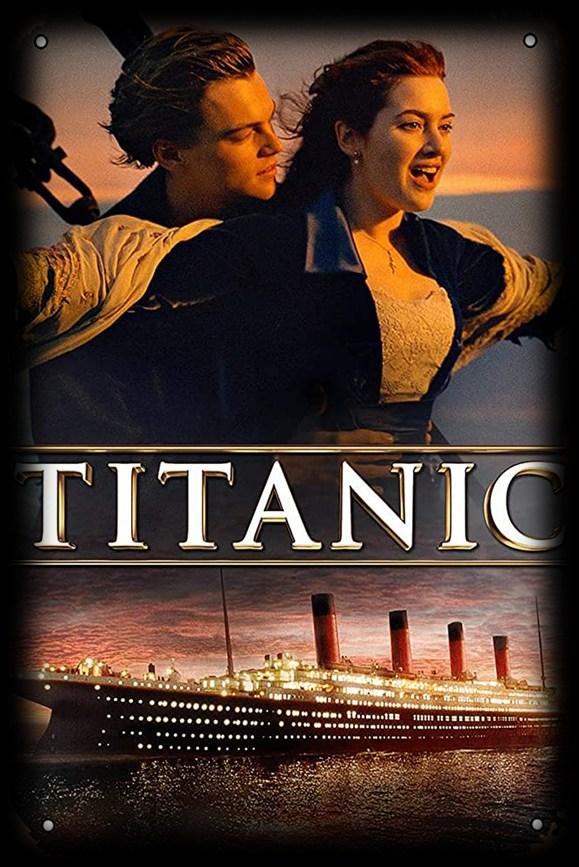
The plot of Titanic is fictitious, Jack (Leonardo DiCaprio) and Rose (Kate Winslet) are characters not people. This revelation still shocks many audiences similar to the character of Sherlock Holmes, who many are still discovering never existed. Although the romantic pair existed only in fiction, they were not entirely made up. The character of Rose was based on a woman named Beatrice Wood. Wood was an Artist born in 1893 who ran from home to escape her “domineering mother”. Both Rose and Wood were being forced into an arranged marriage, Wood admitted that “I left home, a luxurious home, with $15, to be free and I went through a few years understanding the word poverty. But I was free. And freedom means a great deal to me.” Much like Wood, Rose valued her freedom and was unconcerned by materialism, as we see when she chooses to change her identity at the end of the film and live a humble, happy life away from the wealth that she could’ve chosen to chase with her fiancé. Moreover, Rose’s love story with Jack was inspired by her romantic involvement with Marcel Duchamp who was a painter and founded ‘Dadist Magazine’ alongside Henri-Pierre Roche.
You may be wondering about whether Jack Dawson was based on anyone in particular. Put simply No! However the recent discovery that there was indeed a J.Dawson aboard the Titanic working as a crew member was enough to make his tombstone a popular tourist destination, despite James Cameron confirming that when Titanic was in production, he was unaware of this fact.
Molly Brown was one of the few real passengers that appeared in the film and she became known as the “unsinkable Molly Brown” when she survived. Her active role in coordinating with other first-class passengers to help survivors from the lower classes was vital. Molly helped other passengers board lifeboats and had to be persuaded to leave the ship (in Lifeboat 6). She urged the passengers on her lifeboat to go back to save more people, but the crewman refused. Molly threatened to throw the crewman overboard, and there are mixed accounts on whether those crewmen survived.
The Ship
James Cameron originally wanted to create a floatable replica of the Titanic, to use as the films set, this was of course before he was aware of the $10 Million building cost and the realisation
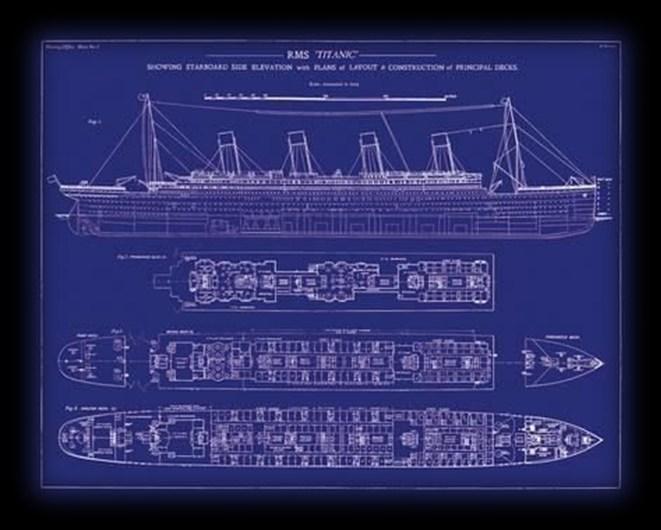
that he’d only be able to get one shot of the Ship Sinking! Cameron did however conduct detailed research into the blueprints of the ship , and went to great pains to make it as historically accurate as possible. The Interiors were recreated paying homage to even the tiniest of details like the silverware, furniture and meticulous research into the White Star Line. Another accurate detail concerning the Ship was directly addressed by Rose in the film when she asked, "Mr. Andrews, forgive me, I did the sum in my head and with the number of lifeboats times the capacity you mentioned, forgive me, it seems that there are not enough for everyone aboard” to which he replied "About half, actually" going onto explain how the Lifeboats had made the Deck look cluttered. Whether or not this was the real reason as to why there weren't enough boats to save everyone from the disaster, the fact of the matter was that there were an inadequate number and it led to 1,503 fatalities and only 705 survivors, that means that only 32% of the passenger's lived. This was something that Cameron didn’t shy away from depicting in the film. The devastation, emotional turmoil and tragedy , hit the audience like a ton of bricks. On the other hand there were some elements of the set used in the film that were embellished for creativity purposes. For example, the grand staircases and Decks were slightly larger than they would have been in reality to allow for camera movements and large filming crews. Furthermore, The grand Staircase Dome (that spilled the natural sunlight into the Ship) was a cinematic addition for the film, in reality that space was filled with a Grand Chandelier.
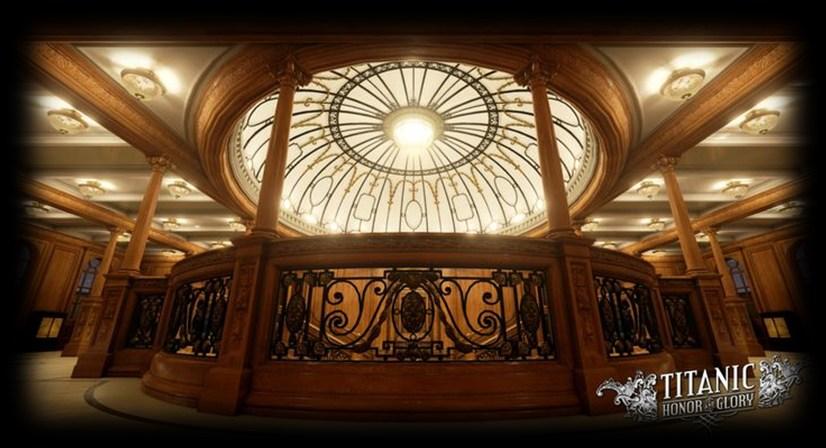
The Storyline:
The film stayed true to multiple aspects of the event, including the Dates, Times and cause of sinking. The RMS Titanic set off from Southampton, England on the 12th of April 1912, headed for New York city. The ship collided with the Iceberg on the 14th of April at 23:40 PM and sunk on the 15th of April at 02:20 AM in the North Atlantic Ocean. In the film Captain Edward John Smith is dead set on arriving in New York as quickly as possible so as to make the Headlines in the papers. In reality Captain Smith was found “Not responsible” for the disaster that befell the ‘unsinkable Titanic’ although, there are accounts of the Captain choosing to ignore 7 warnings that he received about the dangers of the icy waters and continued at full speed without any change. The inaccuracies lie in the time of the film where the Ship is sinking. After the tragedy numerous survivors i.e. eyewitnesses, explained that the Ship snapped in half and for a period of time nobody believed that this could be true until… scientists proved that the immense pressure would have no doubt caused an event like this to occur. This discovery was made before the production of Titanic was underway which is why we see this happen in the film . What we do see happen in the film is all of the lights flicker and go out on the ship as it sinks. This is interesting because survivors also explained that the lights never went out in the 2 hours and 40 minutes that the Titanic was sinking and so in the film again, due to no-one believing them, the lights on the ship went out. Now, new evidence has come to light and researchers have made the revelation that many had already tried to bestow upon them, THAT THE LIGHTS NEVER WENT OUT!
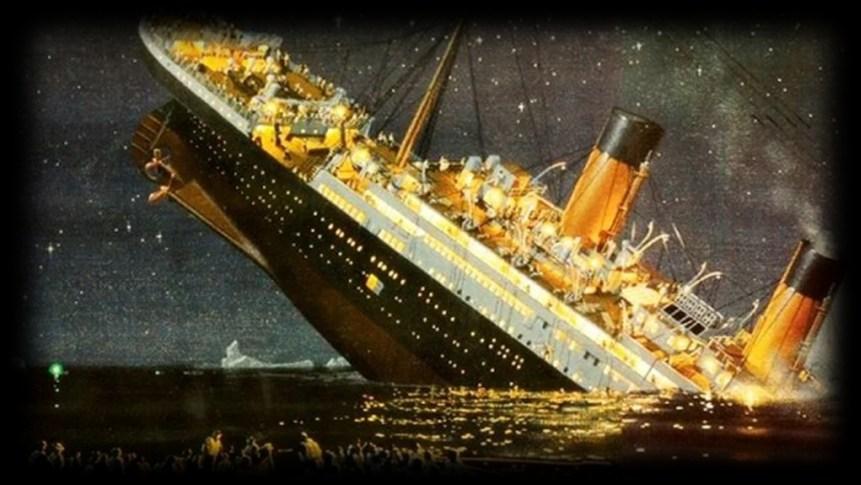
In conclusion, James Cameron went to great lengths to accurately portray the tragedy with all of the information that he could source. Of course their were embellishments for cinematic effect but nothing that he did affected what we know as truth today, that the Titanic was a terrible tragedy that will never be forgotten.
WrittenbyLuisaHughes
Titanic – The Infamous Captain Edward Smith – Celtic Clothing Company Is Rose From Titanic Real? - Truth About Kate Winslet’s Character
Titanic True Story: How Much Of The Movie Is Real

Answers

2. Herodotus
3. Richard I 4. Michelangelo
5. Ivan the Terrible
6. 1789
7. Giuseppe Garibaldi
8. Abolitionist movement
9. 1807
10. Stephenson’s rocket
11. Anne of Cleves 12.




Rabat
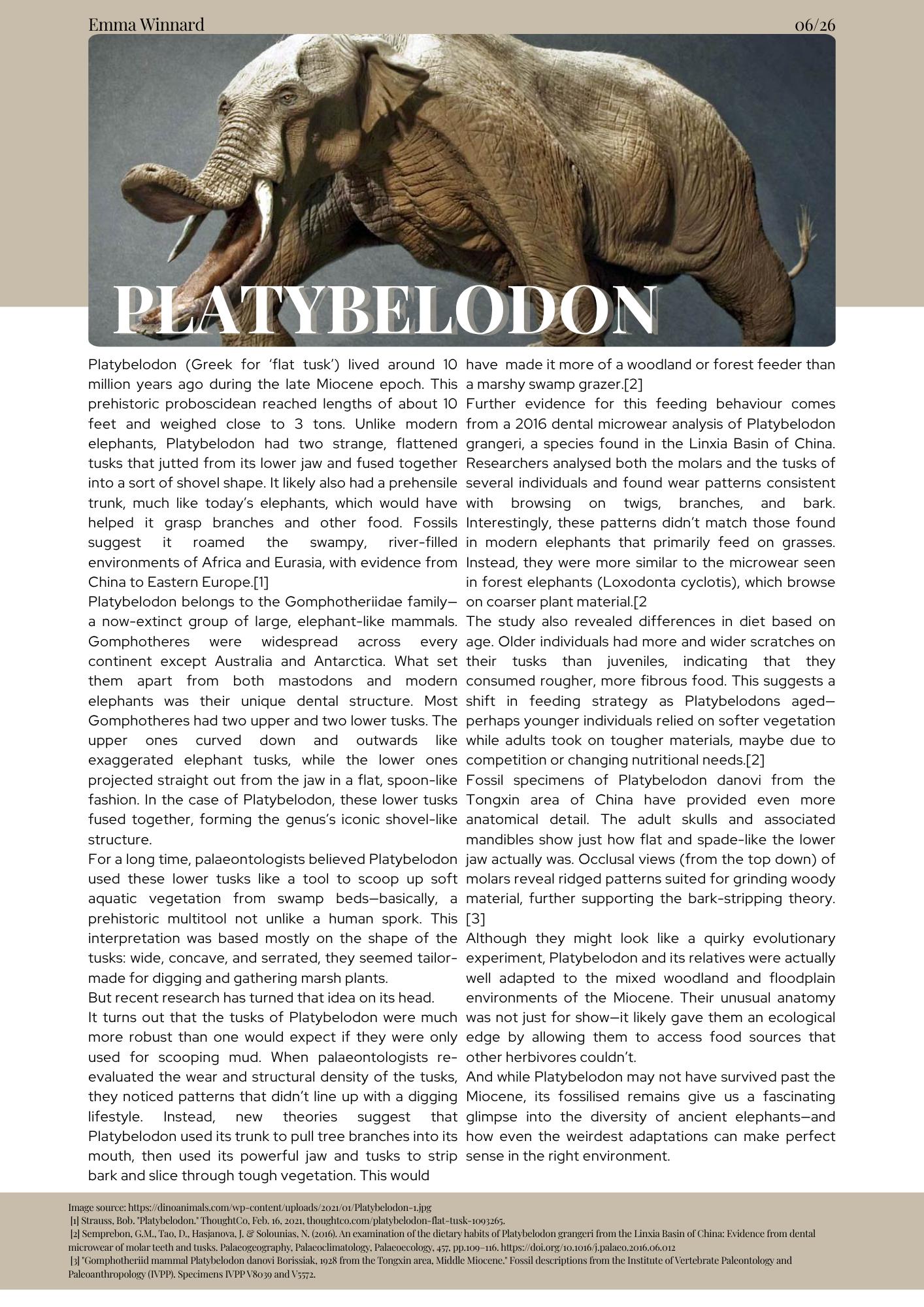
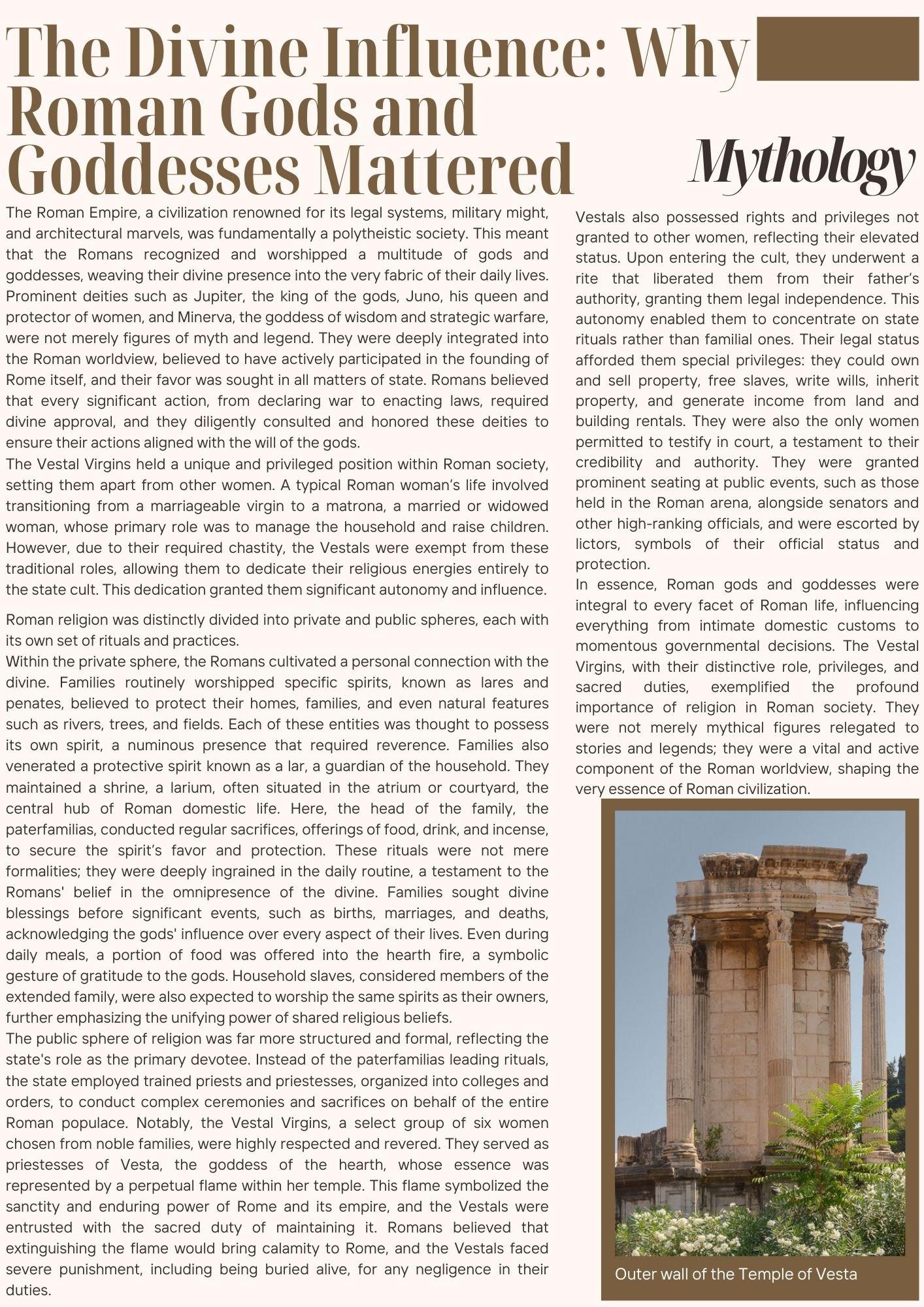
LOOKING BACK: A Year in GAIA

This year has brought us many fantastic events from one-off events such as the rock competition to stalls at college events such as Winter Wonderland to weekly staples suchasLatinandModelUN.
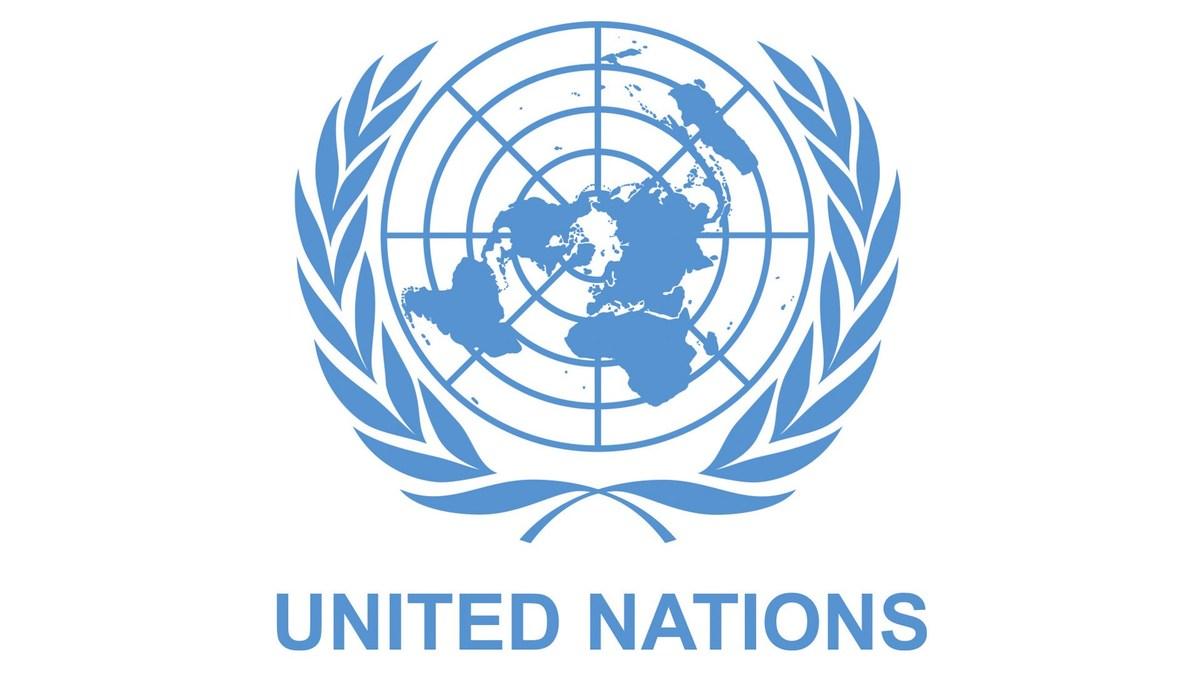
Model UN:
Everyweek,RyanCainhasrunthecollege’smodelUNcoveringarangeoftopics fromwhetherornotweshouldhaveafree,globalnewssourcetoadebateonimmigration.Withconsistentlyhighweeklyattendance,thisisoneofGAIA’smost lovedsessionseveryweek.IfyouwouldliketojointhemodelUNfortheirfinal debateonTuesday1st July,pleasecontactRyanCain(J000290).
GAIA Bake Off:
InFebruary,wehostedabake-offwiththethemeof‘Planet’toraisemoneyfor thecharity‘Zoe’sPlace’.Congratulationstothewinner- BeccaGallagherandan honourablementiontoOliwiaandLuisafortheircontributions.Also,ahuge thankyoutoallthosewhodonatedtohelpraise£66.50forthecharity.
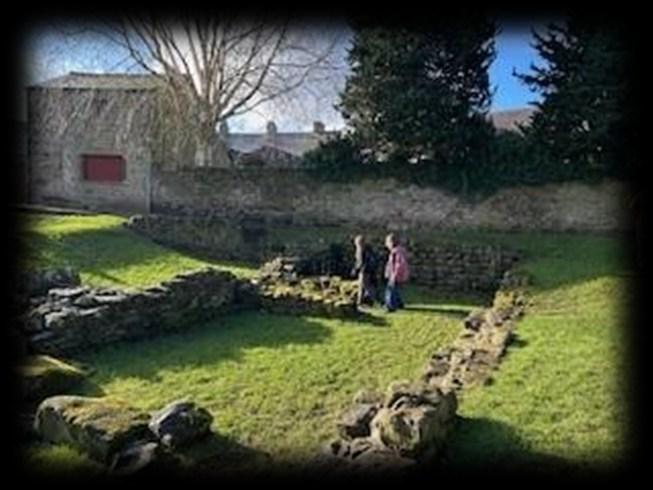
Latin:

Thisyear,LatinwasintroducedandtaughtbySilviaMarqueswhichwasahit amongststudents.InApril,studentssatanexamtogainanEntryLevelqualificationinthelanguageandhavesincedeliveredpresentationsonRoman godsandreceivedpresentationsfromsomeoftheHistoryandGeography teachersatcollege.
The Great Debate:
Earlierthisyear,RyanCainandPhilippaHorrobinwerebothhugelysuccessful incompetinginregionalastheyansweredthequestion‘Howcanyourlocalstorytellaglobalstory?’Welldonetothemboth!:)

Culture Day:
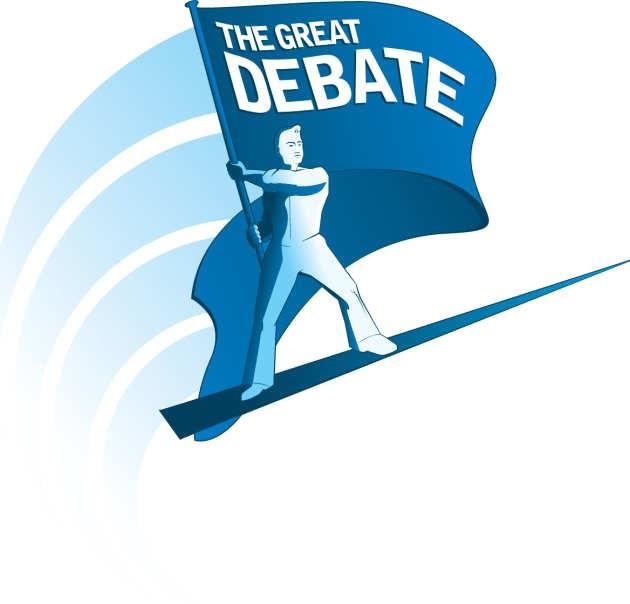
Thisyearatcultureday,weonceagainbroughtyouallarangeofteaflavoursfromaroundtheworldinordertoraisemoneyforcharity.Thank youtoallthosewhocameandboughtteafromourstallandhelpedus raisemoneyforcharity.
Baldwin the Brontosaurus:
OurfirstcharityeventoftheyearsawustryingtokeepBaldwintheBrontosaurus warmduringtheWinter.Weaskedfordonationsofhats,gloves,fluffysocks,wellies, earmuffsandscarvesforBarnardo’s.Thankstoallthosewhodonated.

Talks:
Winter Wonderland:

Towardstheendoflastyear,wehadastallatWinter WonderlandandraisedmoneyforTheBrick.Weofferedarangeofactivitiessuch asnamethedinosaur,rockpainting,ChristmasselfieswithBrianCox,HenryVIII andSirDavidAttenborough,origamiaswellasofferingarangeofbakedgoods. Onceagain,ahugethankyoutoallthosewhohelpedwiththestallanddonated money!
Thisyear,manypeoplehavecomeintocollegetogivetalksandspeeches.Belowisalistofafewthatwehavehad:
AWinstanleyalumnicameintotalkaboutstudyingHistory,hisdegree atOxfordUniversityandhiscurrentroleinmarketing.
· ArcticExpeditionTalkwithaformerWinstanleystudent.
· WoodlandTrustCareersinConservationtalk.

Trips:
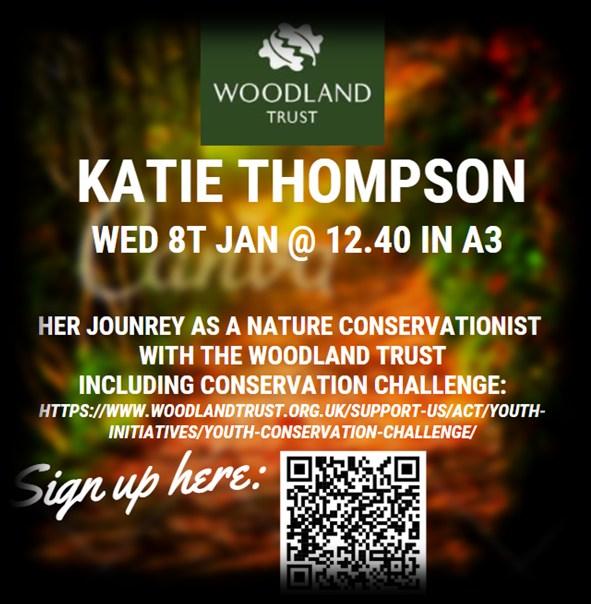
Thisyear,GAIAhasofferedarangeoftripstostudentsstudyingeither History,GeographyorGeology.Belowaresomethathavetakenplace:
· Ribchester
· RichmondCastle
· UCLAN
· Poland(aspartofanexternalprogramme)


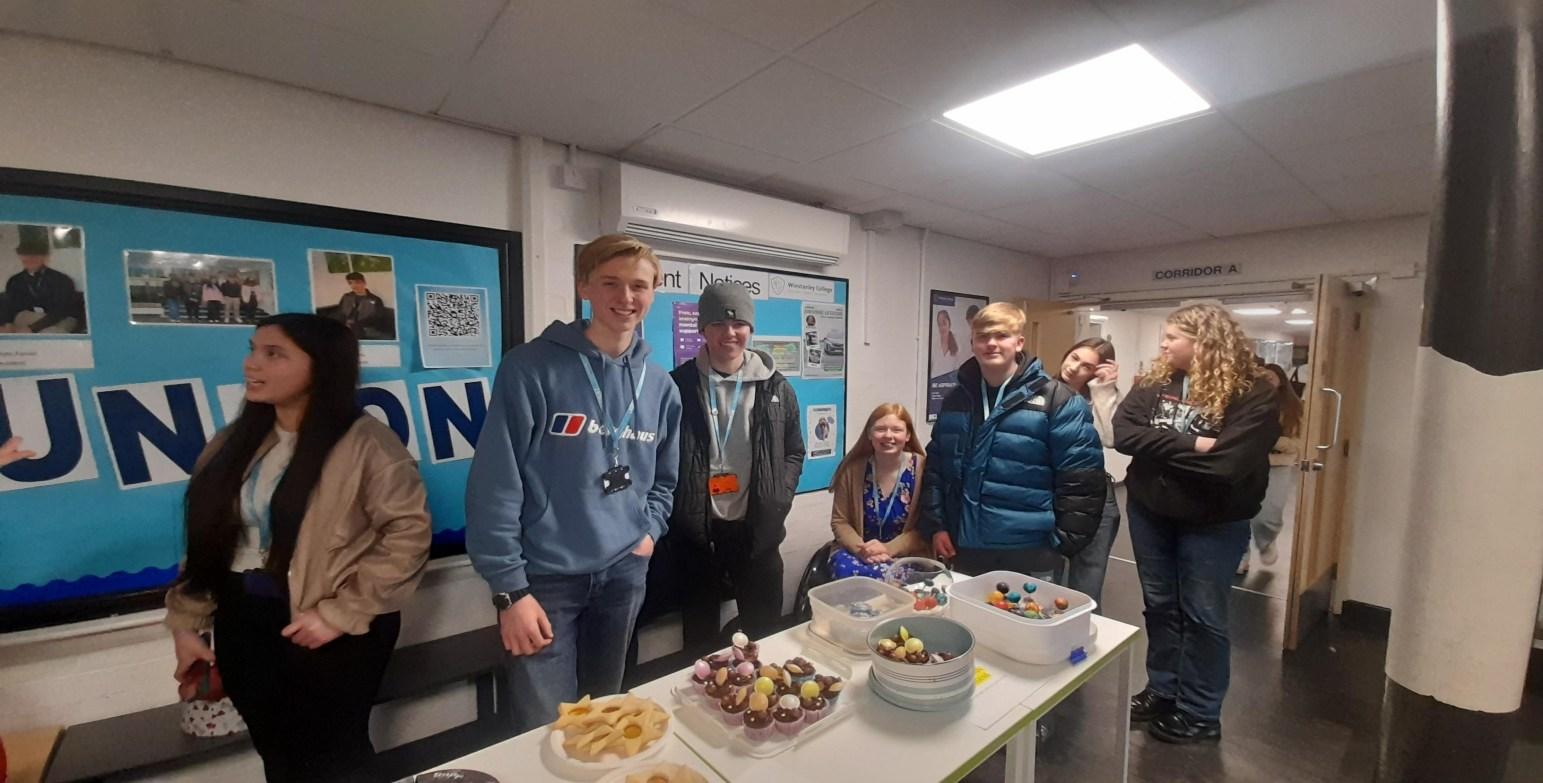
2024-2025 Coordinators:

GAIASecretary:EllaHaseldine
Editors-in-chief:CallumSmithandLuisaHughes
MagazineEditorialTeam:RosalineWilliams,PhilippaHorrobin,LucyWinkel,KeishaAinsworth,BlakeKeating,OscarSheldon,FayeAmeliaRoseGlover-Smith
ModernHistoryCoordinators:RemyNaylorandPhilippaHorrobin
MedievalHistoryCoordinator:BlakeKeating
ModelUN Coordinator:RyanCain
MythologyCoordinator:TylerCollard-King
GeographyCoordinators:ZaneHighton,OliwiaJaronska,HeatherCorner
CharityCoordinator:RebeccaGallagher
A big Thankyou

As we wrap up the year there are a few people that we’d love to thank for their contributions to the Magazine. First of all, our fantastic team of Editors; Rosaline Williams, Philippa Horrobin, Lucy Winkel, Keisha Ainsworth, Blake Keating, Oscar Sheldon and Faye Amelia Rose GloverSmith . They have worked tirelessly to ensure that every article has been reviewed and edited which has been a tremendous help. Another huge Thanks to everyone who’s submitted an article to us, without you we wouldn't have a Magazine to put together we’ve enjoyed reading all of the essays, articles, reviews etc.. that you’ve produced. Thanks are also due for Silvia Marques and Ella Haseldine who have ran GAIA superbly and organised the meetings and events for us. And also a shoutout and massive well done to our Model UN coordinator, Ryan Cain who has been voted for as next year’s Student Union president!
It has been a fantastic year of Issues and the biggest thankyou goes to the readers - who make this Magazine possible.
Thanks Again, Luisa Hughes and Callum Smith.
